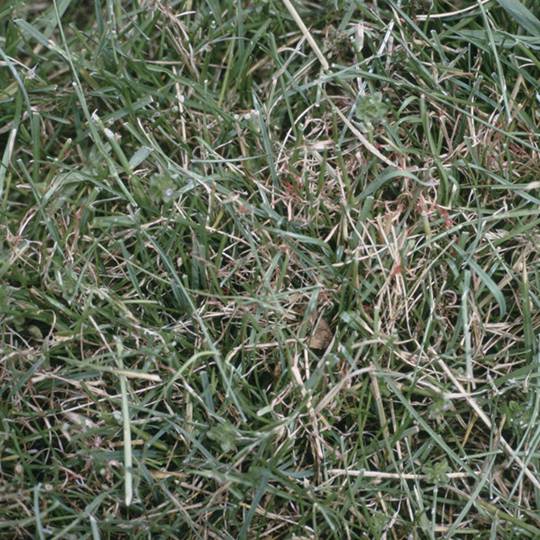
Grasses most commonly affected: Kentucky bluegrass, fescue, perennial ryegrass
Red thread (laetisaria fuciformis) is a tall reddish “thread” that grows above the grass blade. Considered the most desirable of the lawn diseases, it grows on top of grass as a host instead of killing it. If treated properly, red thread may not infect your lawn again in the future as long as it is cared for correctly, unlike other fungi-based diseases that often to reappear without extensive treatment.
Red thread prefers cool conditions and occurs in spring and fall more than summer. Turf that isn’t receiving the proper amount of nutrition is also more susceptible to red thread.
Red Thread Signs and Symptoms
Red thread creates small patches of reddish tinted grass that from a distance may make the grass appear dead. These patches are often confused with dollar spots and other lawn diseases. But upon close inspection it is easy to see the red, thread like material that seems to grow out of the top of grass while the blades themselves remain intact.
Mycelium, a pink fluffy material, can be sometimes be found on the bottom of the infected grass blades.
Red Thread Prevention
Nitrogen-based fertilizers are the easiest way to control red thread. A lawn receiving nitrogen-based fertilization for several years can drastically reduce red thread. Avoid late-night lawn watering, which will cause water to remain in the ground too long and turn into dew by the next morning.
Red thread is mostly unsightly, and not a lawn-health problem, so treatment is not always necessary. The disease can often be eradicated through regular lawn maintenance.
When red thread becomes too visible, or you desire its immediate removal, fungicides have proven to have a high success rate. Cardinal Lawns can help you make red thread a distant memory. Contact us today!
Need Help with Red Thread?
Call Cardinal Lawns today at 614-808-4446 and let's talk about how we can help treat for Red Thread and other common Ohio lawn diseases.
Get a Free Quote